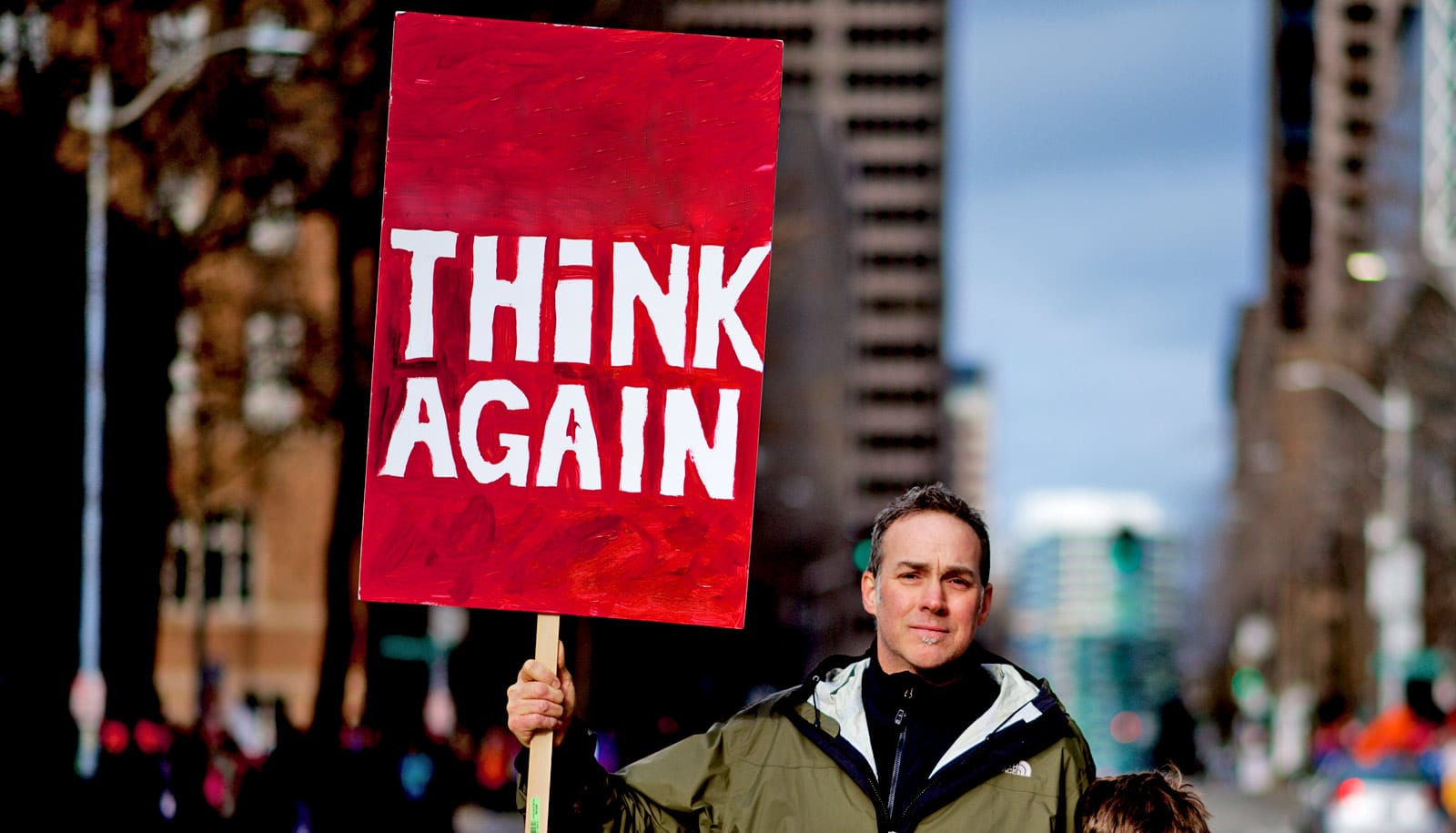A new book explores how African-American women celebrities, producers, and even audiences use “postracial” discourse to refute the idea of postracialism itself.
Postracialism is the thinking that American society has evolved beyond racial discrimination and strife, according to author Ralina Joseph, a communications professor at the University of Washington, in Postracial Resistance: Black Women, Media, and the Uses of Strategic Ambiguity (New York University Press, 2018).
In the book, she describes a sort of “tightrope” that black celebrity women must walk: “Do they call out racism only to face accusations of being called ‘racist’ themselves? Or respond to racism in code only to face accusations of selling out?”
Here, Joseph answers questions about the book and her research.
How do you define “postracialism” in the book?
Postracialism is the myth that racism—and race—are relics of the past. It leads to the silencing of any form of race-talk, or of forthrightly identifying racism. Postracial resistance entails performing postracialism, or put another way, following certain conventions of postracialism (such as not using explicit race talk), in order to resist racism.
In relating your own experiences, you write that you learned to stay quiet in some situations and “sing freely” in others … “I learned how to be strategically ambiguous.” Strategic ambiguity is a key term in your book—how do you define it?
Strategic ambiguity is the main tool of postracial resistance. It’s a way to speak back to racism—often without “speaking” (at least not immediately) at all. Strategic ambiguity is a tool of strategic silence, for example, that you might use when you’re experiencing a microaggression and you feel as though you will be punished if you respond.
To put it another way: Strategic ambiguity is a tool that the sole person of color in an all-white space might use when she has experienced racism/sexism (racialized sexism) but realizes that defending herself will result in her being blamed, shamed, or further discriminated against.
Instead, she might choose to play the long game, respond in ways that do resist (and might even shift an institution), but do so through using what I describe as postracial codes where she does not immediately call out the racist/sexist action.
As an aside, this is the exact opposite theory to what I teach in my Interrupting Microaggressions workshops—which tries to empower people to respond to interpersonal discrimination right away. But I think we need all of the tools we can have in our toolboxes in order to fight discrimination.
You write: “I contend that in its very denial of the uses of race, postraciality remains embroiled in precisely what it claims not to be… postrace is an ideology that cannot escape racialization, complete with controlling images or racialized stereotypes.” Would you explain?
I think this line boils down to my dislike of how power can impose silencing. To me, postrace is a device of silence. What postrace means to me is “we (people who are uncomfortable with race) are going to act as though that race is irrelevant because we simply don’t want to talk about all of the complexities of race, and moreover, how we all fit into the race puzzle—how we are all complicit in constructing the racist fabric of this country.”
Postrace sews up this silence, just hoping that race will go away if we don’t talk about it. But talking about things doesn’t erase them, so all of the old forms of racism—including stereotyping—are still there. Ideologies of postracialism simply make it more difficult for us to have discussions about race and racism.
Postracial resistance allows us to flip the power and decide when we want to be silent, not simply having to be forced into silence because of others’ discomfort.
The use of strategic ambiguity, you write, can, if unintentionally, “devolve into playing into racism.” In what ways is this so?
I think that all of us who use strategic ambiguity have to understand that it’s a potentially dangerous tool—when you don’t call something out right away, those around you who have, for example, made the racist/sexist remark might never realize what they said is a problem, or worse, they think they can get a pass.
Audre Lorde famously wrote that “the master’s tools can never dismantle the master’s house,” and strategic ambiguity is arguably a tool of the master. However, that doesn’t mean that it’s one that we shouldn’t use—that we can’t slowly erode the structural integrity of the house by sneaking out a brick at a time. But it comes with clear challenges.
You study Michelle Obama, Oprah Winfrey, and television producer Shonda Rhimes in the book. Why these three?
Well, the book is, in many ways, a love letter to Michelle Obama. From when she first came on the scene in the 2008 presidential campaign I was so taken by every aspect of how she had to comport herself. I watched with horror when she had to endure extreme, virulent racism, and delight when she experienced over-the-top adulation.
I began writing about one incident where she was attacked in a racist/sexist manner—and had to respond in a strategically ambiguous manner. From there I started looking for other incidents where high-profile black women celebrities used what I started to deem postracial resistance in their responses to racist/sexist attack (and that were unlike Michelle Obama’s responses). Oprah and Shonda Rhimes were two other perfect examples.
The media’s focus on a few black women celebrities, you write, enables it to ignore larger issues of black female disenfranchisement, and shows that the idea racism is ending as “an empty and dangerous lie.” How might the media better balance its approach?
I think that even though it’s 2018 the media can fall into the old tropes of covering issues in silos: racism happens to black men, sexism happens to white women. Black women’s suffering becomes erased in this formula—but the public might not realize this because of the representational omnipresence of black women celebrities.
It feels pretty simple to me: When media is covering an issue, any issue, black women, in tandem with all women of color, need to be represented.
In the second half of your book, you write about joining a group of young black women to watch the popular show America’s Next Top Model. You studied their response to “representations of women of color on television who perform strategic ambiguity.” What did you learn?
In this book, I didn’t just want to propose a theory as I had in my first book. I wanted to exercise this theory with real-life folks. What I learned with my audience study was that the young women did not believe—at all—in strategic ambiguity. They believed in speaking truth to power, in calling out racism and sexism forthrightly and immediately. And when they identified someone on their screens—like Tyra Banks—performing strategic ambiguity they skewered her for it immediately.
Now, I think some of this response was generational—they were younger women, idealistic, bolstered in their college classes, and not yet in the workplace—and some of it was that they were imagining their responses while in the company of only other women of color. There was a certain safety in their girls having their backs—they could respond in any way they wanted and be validated.
When I write about strategic ambiguity, I talk about it as something one has to perform when we’re essentially all alone, and there’s not someone there who sees us, who can witness our discrimination and can help us respond in ways that all can hear. It’s a strategy of the desperate!
Can the ideas of your book be universalized to speak to all underrepresented populations? If so, what would you suggest as its take-away message?
Absolutely! The experience of being “the only” representative of a population who is minoritized—whether that means being the person of color, the out LGBTQ+ [person], the person with a disability—is fairly universal. We learn how to speak in certain similarly coded ways for our safety.
One of the most exciting parts, for me, about having a book come out is sharing it with different audiences, and the Postracial Resistance audiences I’ve met so far have been full of different types of folks who have identified with having to use strategic ambiguity because of all kinds of underrepresentation.
Source: University of Washington



